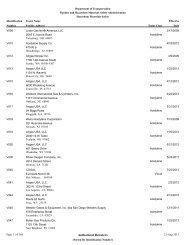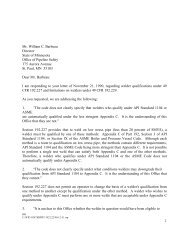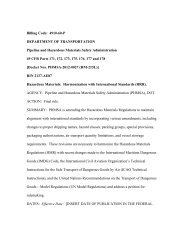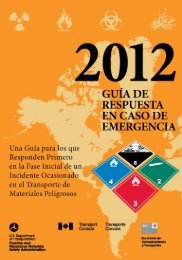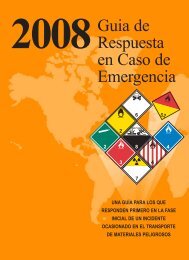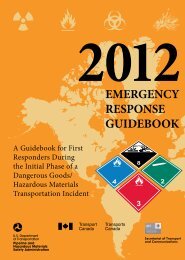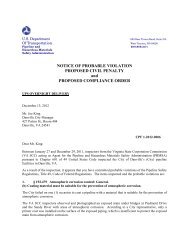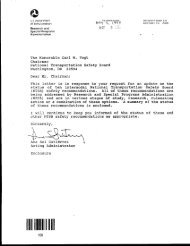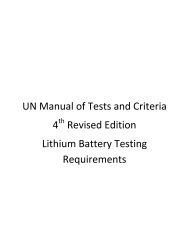Training Guidance7609am.indd - PHMSA - U.S. Department of ...
Training Guidance7609am.indd - PHMSA - U.S. Department of ...
Training Guidance7609am.indd - PHMSA - U.S. Department of ...
You also want an ePaper? Increase the reach of your titles
YUMPU automatically turns print PDFs into web optimized ePapers that Google loves.
RECORDKEEPING REQUIREMENTS<br />
What You Should Know: A Guide to Developing a Hazardous Materials <strong>Training</strong> Program<br />
The hazmat employer is responsible for maintaining training records for each hazmat employee. These<br />
records must be kept for the duration <strong>of</strong> the three-year training cycle while the hazmat employee is<br />
employed and for 90 days after the employee leaves employment. <strong>Training</strong> records must be made<br />
available by the employer for audit and review by regulatory authorities upon request.<br />
<strong>Training</strong> records must include the following:<br />
•<br />
•<br />
•<br />
•<br />
•<br />
The hazmat employee’s name<br />
The most recent training completion date<br />
A description <strong>of</strong>, copy <strong>of</strong>, or reference to training materials<br />
used to meet the training requirements<br />
The name and address <strong>of</strong> the person providing the training<br />
A certifi cation that the person has been trained and<br />
tested as required<br />
Certifi cation that the hazmat employee has been trained and tested shall be made by the hazmat<br />
employer or a designated representative. An example training record can be found in the “Helpful Tips<br />
and Tools” section.<br />
OTHER DOMESTIC AND INTERNATIONAL TRAINING REQUIREMENTS<br />
Employers should be aware that the HMR recognizes that other domestic and international agencies<br />
and organizations also have training requirements. For example, the Federal Aviation Administration<br />
prescribes training requirements for air carriers in the 14 CFR. Additionally, the International Maritime<br />
Dangerous Goods Code for vessel shipments; Transport Canada TDG Regulations; and the International<br />
Civil Aviation Organization Technical Instructions for air shipments also prescribe specifi c training<br />
requirements which are important because the HMR authorizes compliance with these regulations.<br />
Therefore, depending on a company’s operations, other training requirements in addition to the HMR<br />
may apply.<br />
Relevant agencies and organizations may include:<br />
•<br />
•<br />
•<br />
•<br />
•<br />
•<br />
•<br />
•<br />
•<br />
United States Federal Aviation Administration (FAA)<br />
United States Federal Motor Carrier Safety Administration (FMCSA)<br />
United States Federal Railroad Administration (FRA)<br />
United States Coast Guard (USCG)<br />
United States Occupational Safety and Health Administration (OSHA)<br />
United States Environmental Protection Agency (EPA)<br />
Transport Canada TDG regulations (TDG)<br />
International Maritime Organization (IMO)<br />
International Civil Aviation Organization (ICAO)<br />
5



